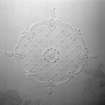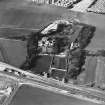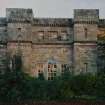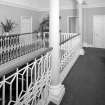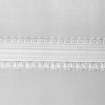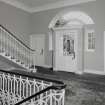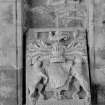Scheduled Maintenance
Please be advised that this website will undergo scheduled maintenance on the following dates: •
Tuesday 3rd December 11:00-15:00
During these times, some services may be temporarily unavailable. We apologise for any inconvenience this may cause.
Seton House
Country House (18th Century) (1789)-(1791)
Site Name Seton House
Classification Country House (18th Century) (1789)-(1791)
Alternative Name(s) Seton Palace; Seton Castle; Wemyss Estate
Canmore ID 54940
Site Number NT47NW 3
NGR NT 41734 75084
Datum OSGB36 - NGR
Permalink http://canmore.org.uk/site/54940
First 100 images shown. See the Collections panel (below) for a link to all digital images.
- Council East Lothian
- Parish Tranent
- Former Region Lothian
- Former District East Lothian
- Former County East Lothian
NT47NW 3.00 NT 41734 75084
NT47NW 3.01 NT 41839 74918 Garden, Cottage
NT47NW 3.02 NT 4174 7506 Gardens
NT47NW 3.03 NT 4171 7521 Orchard
NT47NW 3.04 NT 41803 75054 Bridge
see also - Nt47NW 4.00, 4.01 and NT47SW 72 NT 41818 74977 Garden cottage
(NT 4172 7508) Seton House (NAT)
on site of Seton Castle (NR)
OS 6" map (1967)
The Object Name Book of the Ordnance Survey (ONB) describes the house as 'A large and handsomely built mansion, in good repairs having garden and a few acres of ornamental ground attached. The property of the Earl of Wemyss.
This house is built upon the site of "Seton Palace or Castle" which formerly belonged to the Earls of Winton, but were deprived of 'by forfeitture in 1715', from their devoted attachement to the Stewart family. "The old Palace of Seton", with its fine gardens and terraced walks, which the Monarchs of Scotland and their court in former times delighted to visit, are now no more. The remains of the former having been pulled down by the late proprietor, to build a "modern mansion" (New Statistical Account [NSA] 1841).
'Near the W side of the house is part of the old castle consisting of a ruinous apartment dimensions of which is about 9 feet by 7 the walls are about 4.5 feet thicvk. It is spposed to have been the prison of the Castle and is usually called the jail by the inhabitants of the immediate vicinity'.
Name Book 1853
Seton House, built in 1790, is an outstanding example of a large castellated mansion designed by Robert Adam. It occupies the site of Seton Palace, a late 16th century house, built on an L-plan with a tall square tower. The 17th century garden walls, with round corner towers, associated with the Palace, still survive, and a small collection of pediments and other architectural fragments from the Palace has been set up near Seton Chapel (NT47NW 4, at NT 4182 7511).
C McWilliam 1978; S Cruden 1958; Name Book 1853; NSA 1845 (J Henderson); RCAHMS 1980
Seton House is a large modern mansion, occupied and in good order.
Visited by OS (BS) 15 October 1975
NMRS REFERENCE:
OWNER: Earl of Wemyss
OCCUPIER: Capt. A.R.C. Stevenson
ARCHITECT: Robert Adam 1789
Seton Palace demolished in 1790.
EXTERNAL REFERENCE:
Scottish Record Office
Seton Castle.
Contract for building Seton Castle between Alexander Mackenzie and Adam and Thomas Rusel.
1789 GD 18/4965
National Library
Country Life, 23 May, 1968. Article and photographs by John Fleming.
EL. Agriculture Survey 'p 33 " Seton House, which presented one of the most regular and pleasing plans of any ancient fabric in the county, was some years since pulled down by Mr Mackenzie, the late proprietor, and rebuilt, in a style of architecture peculiar to itself, and which admits of no accurate description'. 1805.
Photographic Survey (1953)
Photographic survey by the National Buildings Record Scottish Council in 1953.
Geophysical Survey (26 September 2017 - 14 November 2017)
NT 4173 7507 (NT47NW 3) Ground resistance surveys were undertaken, 26 September – 14 November 2017, in the grounds of Seton House (also known as Seton Castle). The main survey covered most of the grassed area around the house. A subsidiary survey covered a small area to the W
where the 1st Edition OS map showed a small ruin.
The objective of the survey was to look for features that might pre-date the construction of the present Seton House in 1790. High resistance areas were found to the S and to the W of the present house. There were also faint possible high resistance features to the NE of the house. No clear features suggestive of the ruin were detected in the subsidiary survey.
Funder: EAFS and Gordon Neil
Don Matthews – Edinburgh Archaeological Field Society
(Source: DES, Volume 18)





















































































































































